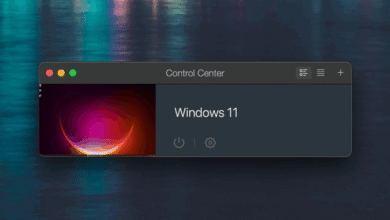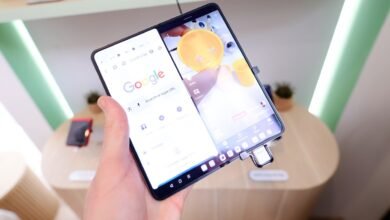Shocking Updates in AR and Smart Glasses Tech You Won’t Believe!

What’s New in the Wearable World of Smart Glasses and Extended/Augmented Reality
Smart glasses have rapidly evolved, transforming from niche tech gadgets into essential tools that seamlessly integrate augmented reality (AR) and extended reality (XR) capabilities into our daily lives. This blog aims to explore the latest advancements in this wearable technology, how they can enhance our interactions with the digital world, and what future innovations may lie ahead.
The Evolution of Smart Glasses
The journey of smart glasses began over a decade ago with devices like Google Glass, which introduced the concept of a hands-free interface. Initially met with skepticism and privacy concerns, these early models primarily served as a novelty item and a tech experiment. However, as technology has progressed, so too has the functionality and design of smart glasses, making them more appealing and practical for consumers.
The current generation of smart glasses integrates advanced features while boasting sleeker designs that resemble traditional eyewear. With built-in cameras, microphones, and sensors, these devices can overlay digital information onto the real world, providing users with an immersive experience that was once solely the myth of science fiction.
Key Features of Modern Smart Glasses
Today’s smart glasses are equipped with a variety of features that enhance their utility and user experience. Below are some of the noteworthy capabilities:
- Augmented Reality (AR) Integration: Modern smart glasses now embed AR technology, allowing users to visualize digital images and information within their physical surroundings. This feature can be used for navigation, gaming, and interactive learning experiences.
- Voice Commands: Many new smart glasses support voice recognition, enabling users to execute commands hands-free. Whether it’s making calls, sending messages, or accessing apps, this feature enhances safety and convenience, particularly while on the go.
- Health Monitoring: Some models are starting to incorporate health-tracking sensors, allowing users to monitor their fitness and well-being. This includes tracking heart rates, sleep cycles, and physical activity.
- Seamless Connectivity: Modern smart glasses can connect with smartphones and other devices via Bluetooth, allowing for easy sharing and notification management. Users can receive alerts, read messages, and even access their favorite applications directly through their glasses.
- Camera Functionality: Built-in cameras in smart glasses allow for video recordings, photo capture, and even live streaming of events. This capability creates opportunities for social sharing and improved interaction in various environments.
Notable Innovations in Smart Glasses
With the rapid pace of technological advancements, numerous companies have entered the arena of smart glasses, each bringing their unique vision to the table. Here are some notable innovations that have recently emerged:
Google’s Latest Version
Google has made a significant comeback in the smart glasses market with a new model designed primarily for workplace efficiency and collaboration. Google’s smart glasses are now targeted towards enterprise environments, offering tools for project management, task tracking, and communication between team members. The integration of AR features provides immersive experiences that can revolutionize training and operational efficiency.
Ray-Ban Stories
A collaboration between Facebook and Ray-Ban has produced the Ray-Ban Stories, a stylish pair of smart glasses that emphasize social connectivity. The glasses come equipped with dual-camera functionality, allowing users to capture moments from their perspective. They include voice control capabilities, making it easy to take photos, record videos, and listen to music without reaching for a phone.
Nreal Light
Nreal has introduced its augmented reality glasses, Nreal Light, designed for consumers seeking an immersive experience. With lightweight designs and the ability to project large virtual screens, these glasses enable users to interact with digital content in a way that feels natural and engaging. Developers are also encouraged to create applications providing diverse experiences, from gaming to virtual meetings.
Applications of Smart Glasses in Everyday Life
The applications of smart glasses span various sectors, from entertainment to professional settings. Below are some examples of how smart glasses are being utilized:
Education
In educational environments, smart glasses are proving to be powerful tools. AR can enhance learning by providing interactive 3D models and contextual information. For example, students studying biology can visualize cellular processes in real-time, contributing to a deeper understanding of the subject matter.
Healthcare
The healthcare industry is leveraging smart glasses for hands-free access to patient data and real-time communication with colleagues. Surgeons can use them during operations to view critical information while maintaining focus on the procedure, improving precision and outcomes.
Retail
In retail, smart glasses can transform shopping experiences. Customers can try on virtual clothing, view additional product information, or even receive personalized recommendations based on their previous purchases and preferences. This level of interactivity can lead to increased sales and customer satisfaction.
Gaming and Entertainment
The gaming industry has begun integrating smart glasses for immersive experiences. Users can interact with virtual environments and characters in real-time, making gaming more engaging. This technology is also finding a place in concerts and events, where augmented visuals can enhance performances.
Concerns and Considerations
Despite the exciting advancements in smart glasses, there are legitimate concerns that need addressing:
Privacy Issues
The inclusion of cameras in smart glasses raises significant privacy concerns. Unauthorized recording can become a problem, leading to apprehension regarding surveillance. Manufacturers must implement strict guidelines and features that respect users’ privacy and ensure transparency.
Health Impacts
Extended use of smart glasses can lead to eye strain or other health issues. Developers are tasked with creating devices that prioritize user comfort, including adjustable settings and blue light filters.
Sustainability Challenges
As smart glasses grow in popularity, questions arise concerning sustainability. The lifecycle of these devices — from production to disposal — should be addressed to minimize their environmental impact. Companies need to seek eco-friendly practices in manufacturing and recycling processes.
The Future of Smart Glasses
Looking ahead, the future of smart glasses appears promising. With continuous advancements in AR technology, machine learning, and artificial intelligence, the capabilities of smart glasses will only expand. We can expect:
- Greater Integration with AI: As AI technology matures, our smart glasses may learn user preferences and offer tailored experiences.
- Expansion into New Markets: With new applications emerging in fields like sports, fitness, and construction, smart glasses may transform how we approach various industries.
- Improved Communication: Future smart glasses will likely feature enhanced capabilities for virtual meetings, liaising with remote teams, and collaborating in real-time through AR.
- More Fashion-Forward Designs: As technology continues to blend with consumer aesthetics, we should see a rising trend in fashionable designs that make smart glasses appealing for everyday wear.
As the world embraces innovative technology and increasingly relies on digital connectivity, smart glasses stand at the forefront, poised to redefine our realities.
Conclusion
The evolution of smart glasses has set the stage for a new era where augmented and extended reality can harmoniously coexist with our lived experiences. With innovative designs, practical applications, and an eye towards future advancements, smart glasses are not just a transient trend but rather a significant development in wearable technology. As we navigate this continually changing landscape, the potential for these devices to enhance and enrich our lives remains unparalleled.
Summary
- The development of smart glasses has transformed them from niche gadgets to essential tools, integrating AR and XR functionalities.
- Modern smart glasses boast features like AR integration, voice commands, health monitoring, seamless connectivity, and camera functionality.
- Notable innovations include Google’s enterprise-focused glasses, Ray-Ban Stories for social connectivity, and Nreal Light for consumers seeking immersive experiences.
- Applications span education, healthcare, retail, and gaming, showcasing the diverse utility of smart glasses.
- Concerns around privacy, health impacts, and sustainability challenge developers to address these issues responsibly.
- The future holds promise for greater AI integration, new market expansions, improved communication capabilities, and fashionable designs.





